Your cart is currently empty!
5 Things you ought to know about Mulan in her Oriental Wonderland

Mulan (2020) reveals a West that is still not ready to see Chinese culture beyond Orientalism and tokenism. It’s fun to watch Mulan uncritically, but it is even funner to see how the West sees Chinese cultural representations and uncover things we never knew about Mulan through a serious, detailed, reading of the film’s aesthetics/sartorial choices.
Despite claims of research into the culture and consultations with Chinese academics, the entire visual and vibe is very much early 20th Century Hollywood style (mainly Qing dynasty stereotypes) combined with B-grade Hong Kong TVB drama. Because of the huge mix in sartorial style, Mulan (2020) turned into some timetravelling fashion show for me.
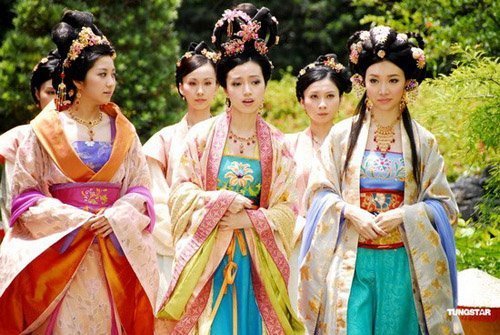
I will split my article into 2 parts–The fun easter eggs part: A brutal one on the major things that went wrong, and the genuine easter eggs part: All the details that showed research attempts by people completely clueless about the culture and history.
As a typical Asian, we usually are better with criticism than praises, so brutal before kind first.
1. Emperor Jet Li Fu Manchu is part Japanese, part Chinese, part Manchurian but fully Oriental
First of all, there’s nothing that screams Japanese than 100000 layers of thick collar. Looks like some emperor decided to have an excessive adoption of the kimono/ Junihitoe multi-collar style. The silhouette of the Chinese emperor and how he sat on the throne also kinda reminded me of the placement of the Japanese dolls in their junihitoe:
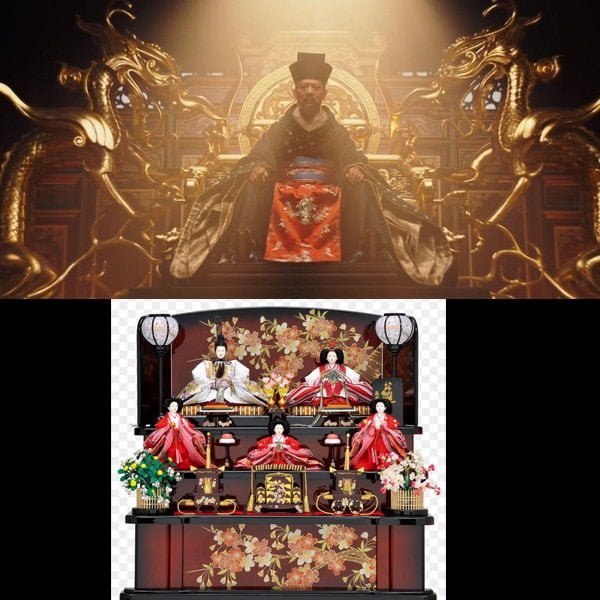
Perhaps the emperor was inspired by an ancient record of how some ancient person dressed in 10000 layers of fine silk that was so translucent that a visitor from the foreign land could see the mole on his chest despite it being under those layers. Except that this time, he added his own interpretation–the Japanese way. But hey, he’s the emperor, so no questioning!
The emperor, besides having really amazing qi and kungfu skills, apparently could timetravel as well. His shiny golden throne is so similar to the Qing dynasty throne some 1000 years later and the way he sat on the throne resembles how the Manchurian emperors would look on it that I was SURE he travelled to the Qing dynasty, made a mental picture of it all, and got back to tell his craftsmen to do something similar to that effect. He also got inspired by the way they sat down on the throne. Probably took him some getting used to, but hey, it looks good, so whatever.

Bottom right: Emperor Qianlong in his ceremonial wear, seated on the throne in a position very much like the one assumed by Jet Li.
You see, the Chinese used to kneel for daily affairs in place of sitting down because of constraints in their dressings, and their furniture were usually low. During the Tang dynasty, higher seats were imported from the West, but the Chinese still didn’t sit like how we do today, with two feet facing downwards. Even the emperor, when he meets foreign ambassadors did not sit the way Jet Li did. Mostly it was cross legged, and their furniture were really low with their “chair” seats being really spacious so you could cross your legs comfortably on it. You would put your feet down if you were sitting on one of their stools (no backings), which was also a Western import.
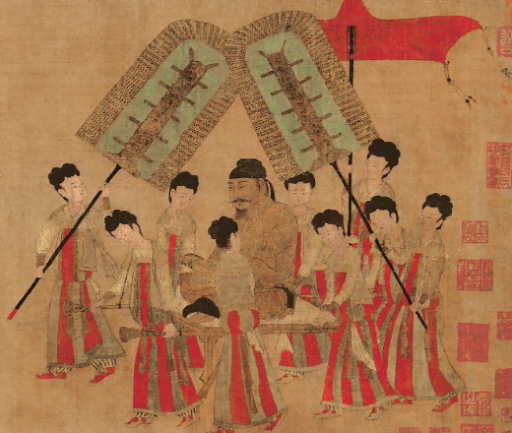
And I really don’t get the hat. I don’t think I can find anything like that unless you’re talking about the Qing dynasty court hat.
Yes, the Tang emperor had around 12 different sets of dresses for different occasions, but none would have this kind of hat and attire. Although I’ve yet to find any Tang drawing with this kind of downturned moustache that has its middle cut off (most of the moustaches are upturned), at least he has some beard at the bottom of the chin which is really a saving grace. You see, there was a rule instituted by the Manchurian rulers during the Qing dynasty some 300 years ago, that all men should pluck off their moustaches on the bottom of their chin and in the middle of their top lips, leaving two separate rows of moustache above the top lip. So that is a uniquely Qing dynasty Chinese look as examplified by Fu Manchu below.
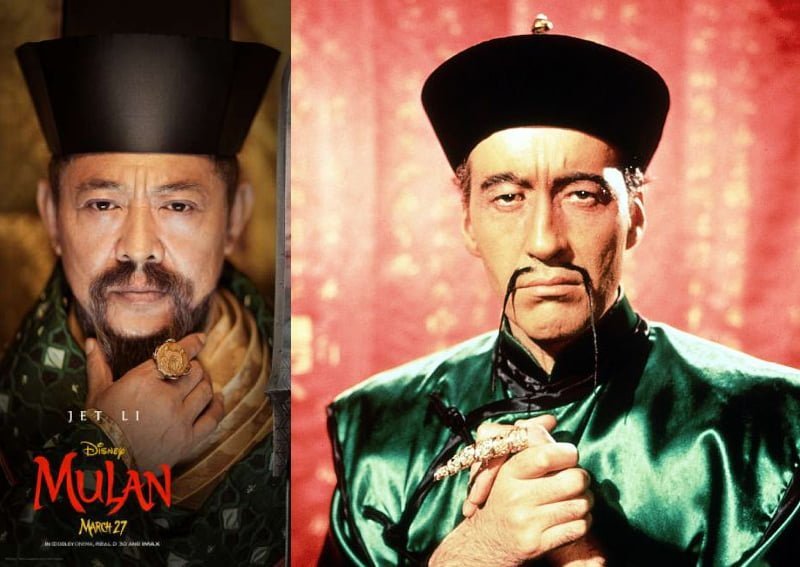
So besides being crazy about Japanese culture like many of us today, the emperor must also be crazy about Qing dynasty culture, like many of us today. Thanks to anime and TVB drama and most recently, Yanxi Palace.
2. Mulan came from a village of bold fashionistas
One thing about Chinese culture that most people are not aware of is that the strict sense of hierarchy in ancient Chinese culture extends to even the way you dress. Since ancient dynasties, the kind of fabric and colours that one could wear was dictated by one’s social hierarchy and it is especially so for men (sorry dudes, this is the price you pay for having ‘qi’). Women often had a lot of leeway to dress in many different colours cos we have been the driving force behind fashion since time immemorial!
So why was anyone surprised that Mulan was a rebel? Her fellow villagers had all the nerve to dress above their hierarchy anyway! Every villager probably also had their hairtoss moments like Mulan.
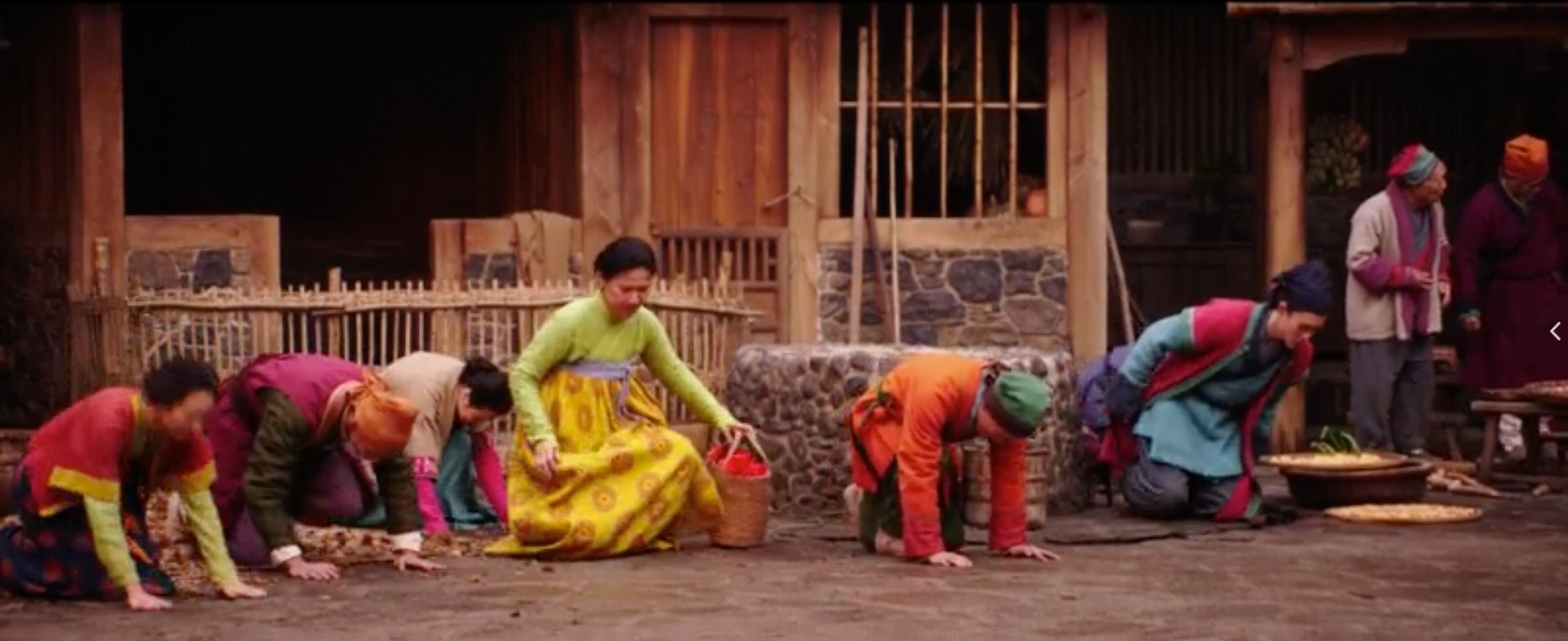
In the Tang dynasty, plebeians like us could only wear yellow or white colour and especially men were not allowed to wear colours such as purple, green and red because they were reserved for various ranks of officials. At one point it was so strict that even your inner wear ought to conform to the rule. Overtime, the court relaxed the rules, partly because they couldn’t possibly enforce it. I mean, just look at Mulan’s village! Audacious fashionistas all! And so, colours like black which was supposed to be just for the soldiers became one of the plebeians’ dressing colours as well.
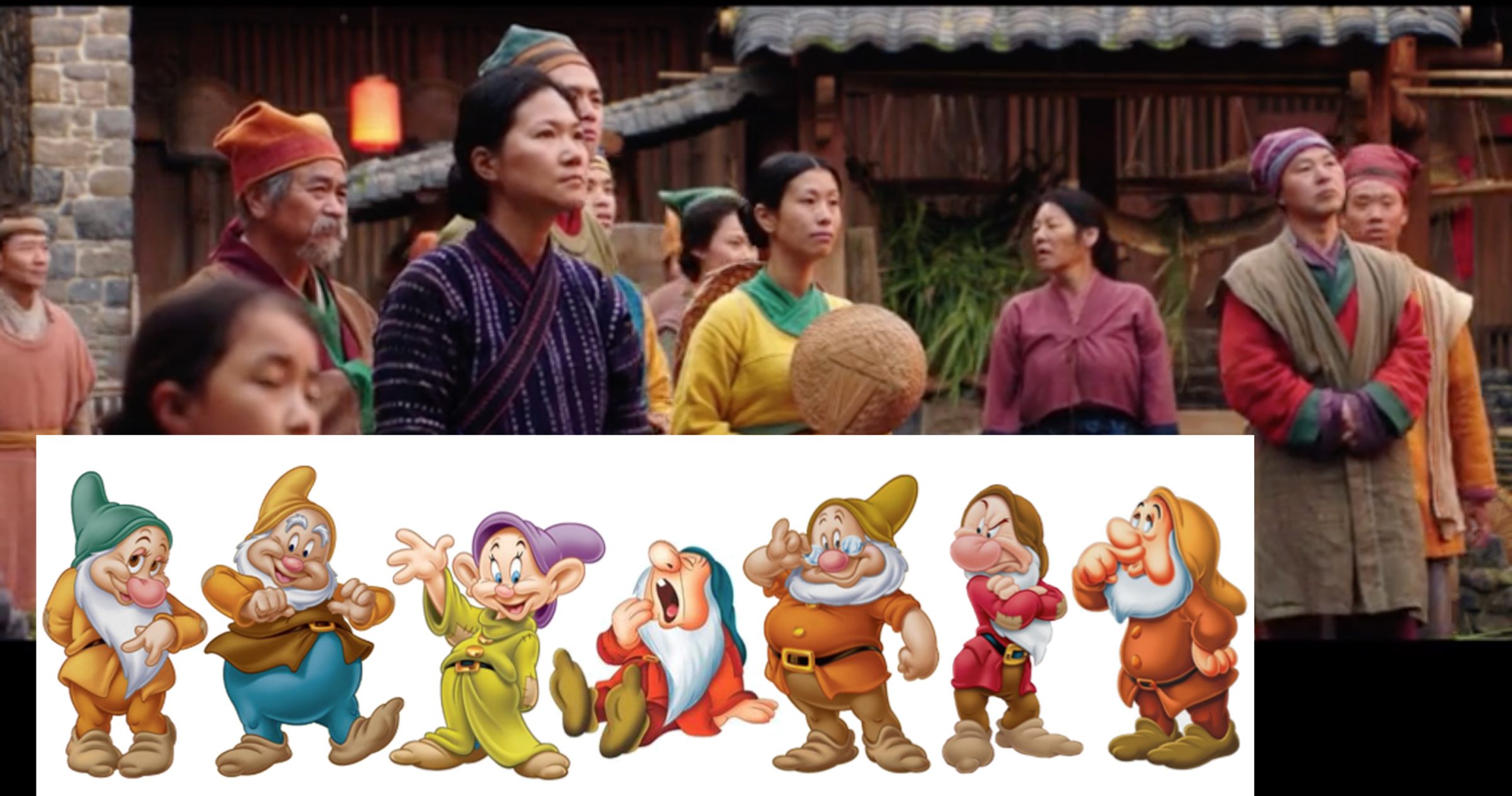
One of the more pragmatic way of looking at it is, it was an extremely laborious and expensive thing to dye clothes using natural dyes. The more vibrant and darker the colour of the fabric, the more number of times you have to put your fabric in the dye and dry and dye and dry. In ancient China, it was also deemed immoral to be vain and excessive in your dressing since the state promotes agricultural practices more than commercial practices(重农轻商). They did not want people to indulge in profiteering, but instead to just work hard to earn their keep and to know their place. Of course these restrictions only applied to plebeians like us, while aristocrats and the well-connected were often found with excessively decorative and expensive accessories and gowns.
3. Mulan wasn’t the only female who could yield “qi” in her village
I also spotted two fashionistas who time travelled forward in time and back to the Tang dynasty. Likely they were the other hidden timetravellers in the Mulan universe yielding their hidden talent “qi”. Perhaps we could expect a Mulan II featuring these characters and how they managed to yield their “qi” to bend time.
Look! One wore a kimono-inspired jacket/top, and another, a late Qing dynasty inspired top.
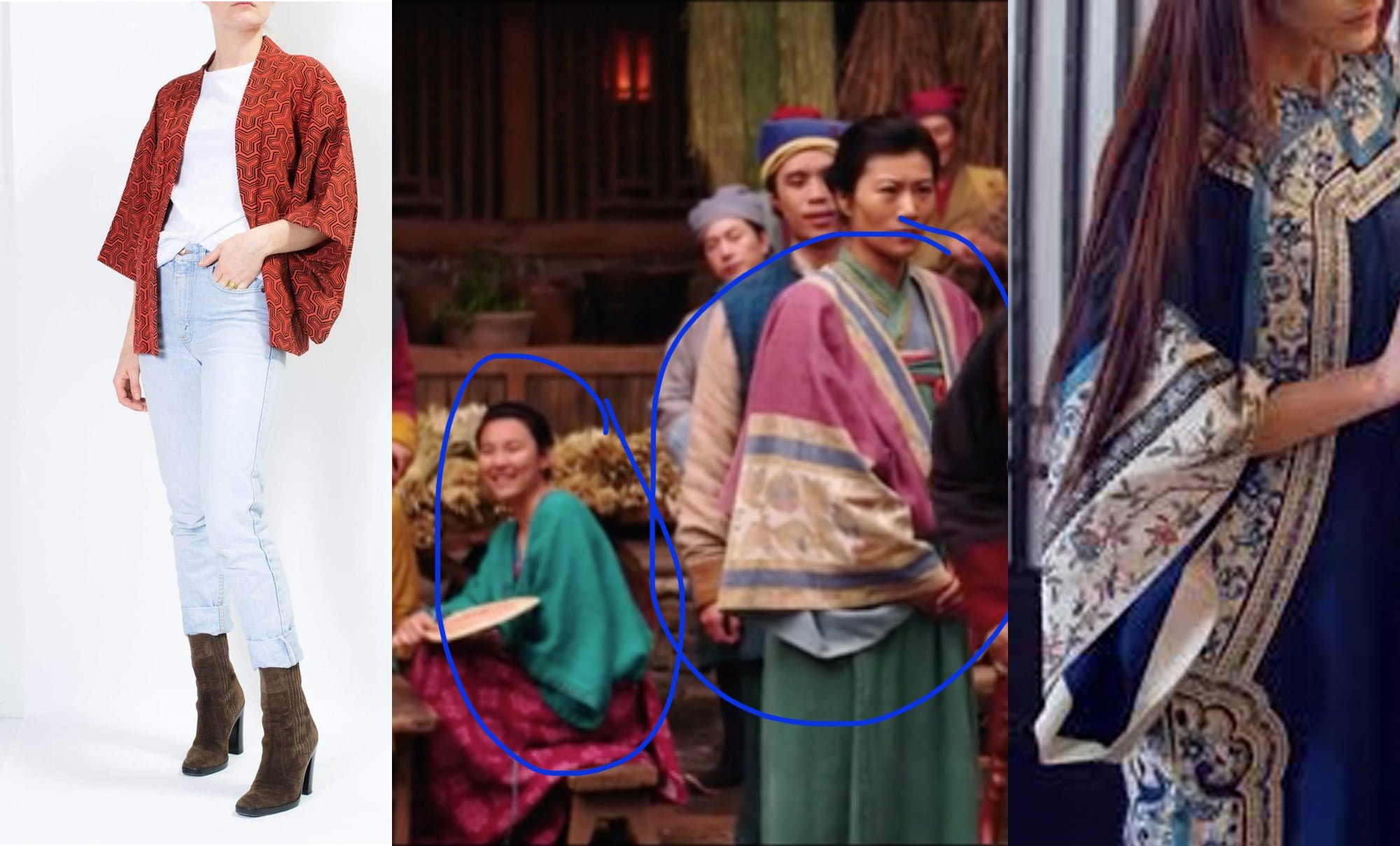
And these brave fashionista village women really matched anything and everything with their cropped short sleeve outer coat (banbi). These women basically piled on every single style of Tang dynasty undergarment to show they are wearing undergarments before their mainouter dress. GIVE ME MY TANG CLEAVAGES!!

Ok, fine, I get it. The designer is trying to show that they are country bumpkins trying to look graceful and elegant like the Tang aristocrats. So their garishly paired dresses and overtly conserative necklines make sense in that context.
4. Mulan’s hand-me-down ancestral matchmaking gown
What Mulan wore was also nothing like anyone in her time-period. Perhaps her mom is me in my past life, obsessed with historical dress-ups and kept/acquired an ancient gown or perhaps her mom inherited it from her ancestors because she brought honour to her family. Oh wait, she couldn’t have cos she didn’t give birth to any male heir unlike in the original Ballad where Mulan at least had a brother! Hmm..
Anway, back to Mulan’s matchmaking dress. It’s called a Quju and was worn a few hundred years before the Tang dynasty which majority of the film’s aesthetics was supposedly based on. I did a quick summary of history of Chinese fashion in the chart below and where her dress fit in.
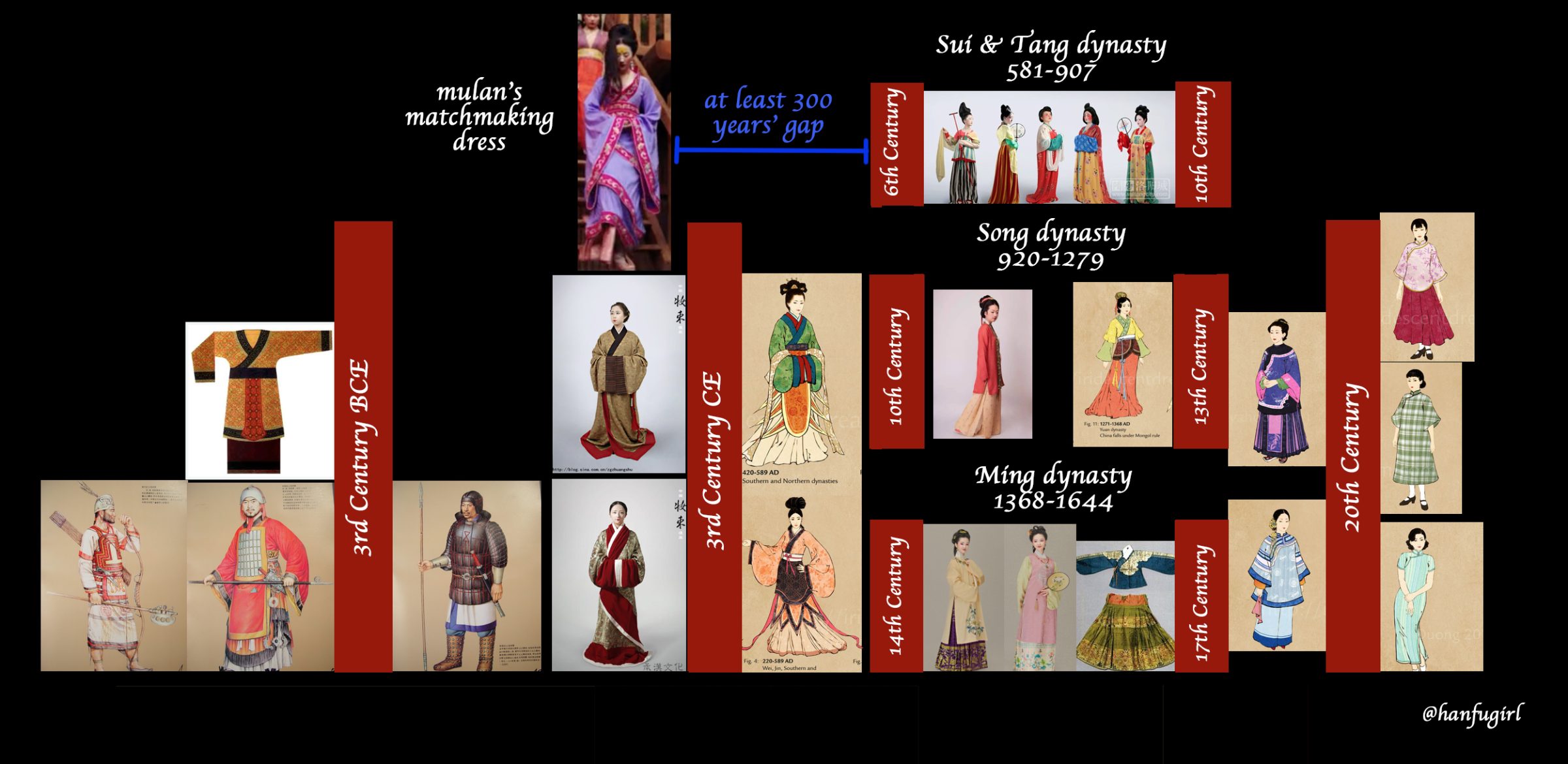
The one-piece wraparound robe-dress was unique to the 3rd century and before, after which, this style of dressing slowly faded into obscurity with most Han Chinese women adopting a two-piece top-bottom dressing style. So that piece that Mulan wore has gotta be an antique piece, possibly more valuable than any of our branded gowns today.
Also in the ancient dynasties, to have embroideries and decorations on the collars and sleeves, one have to be the ruling elites, thus the Chinese term “ling xiu”领袖 today still refers to the leader of a group. So to have her gown being so decorative at the sleeves and collar from that period, one wonders if Mulan’s mom was a distant descendant of some royalties.
BUT WAIT! Her ancient royal ancestor could time travel like the emperor too! Maybe the imperial ‘qi’ helped them to do so… and Mulan inherited it from her mom despite her muggle Dad. Coincidentally, they also time-travelled to the Qing dynasty!
Look at these details… and the colours.. so bright and saturated and artificial that it could only be produced after mid 1800s when the artificial dyes were invented. Also, the motifs and style in which the machine-embroidered pieces looked very Qing dynasty. Yes, with a budget of 200 million USD, I’d expect more hand made artisan intricate and fine things…
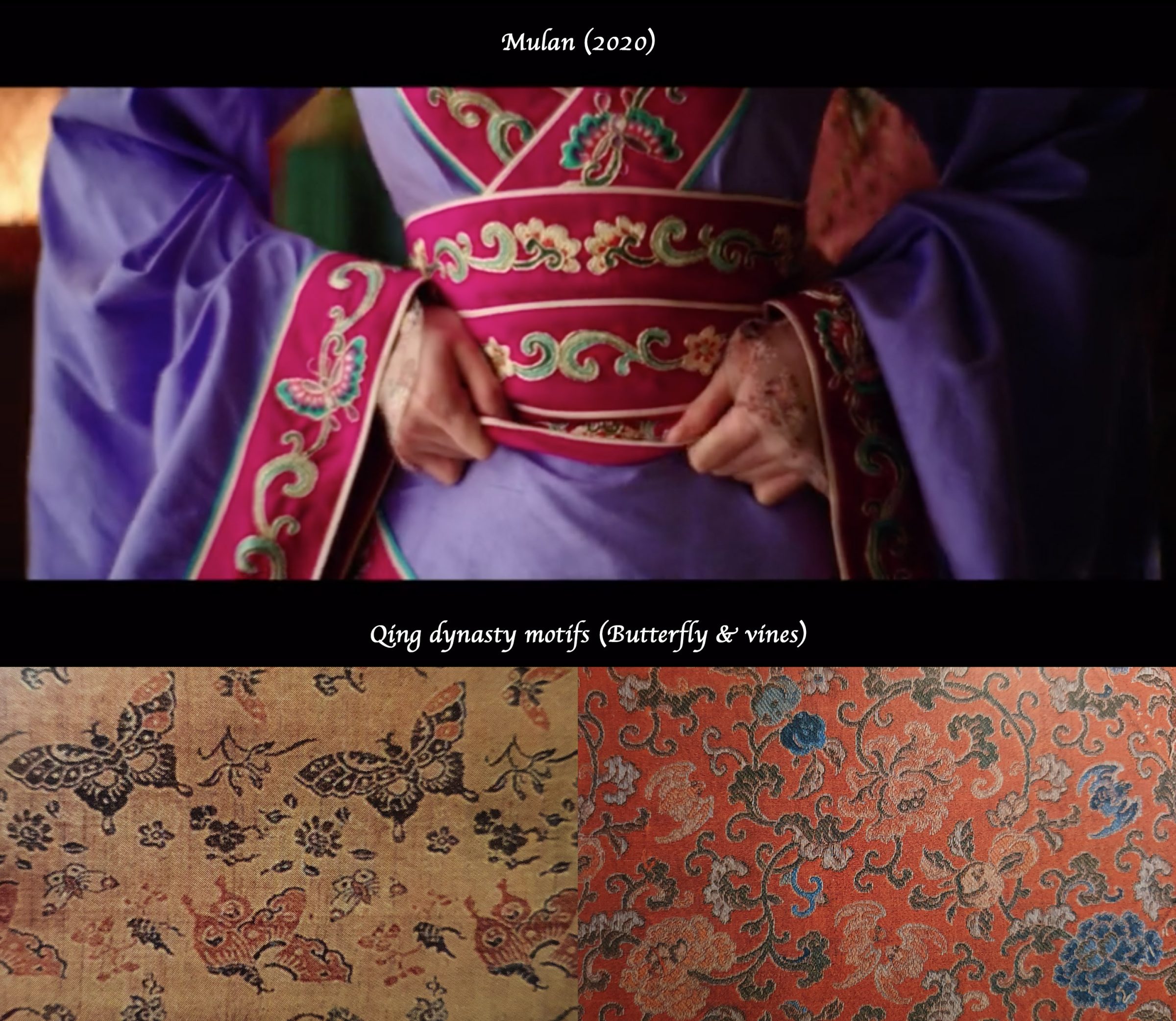
Of course butterflies have exited for a long time and were used as motifs in ancient Chinese for a long time too, but they looked like these in the Tang dynasty:
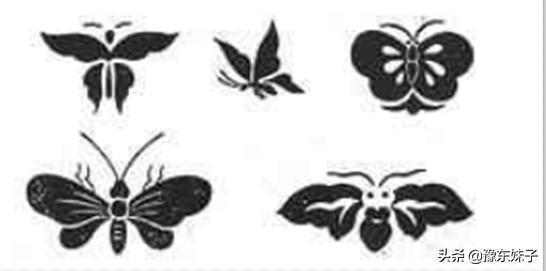
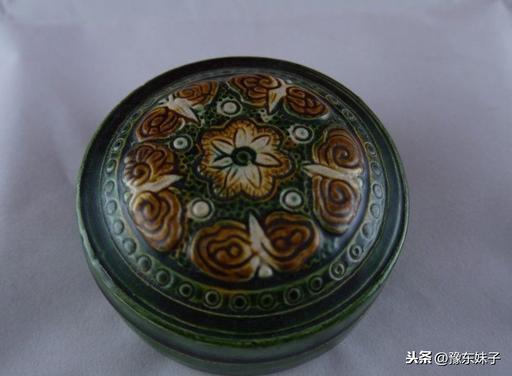
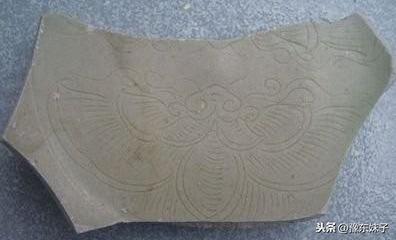
middle: a container with butterfly surrounding the flora pattern in the middle
rightmost: a detailed butterfly motif
And the butterflies became fancier, livelier and and sexier later on.
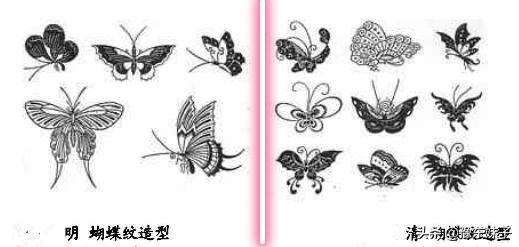
right: Qing dynasty butterfly motifs
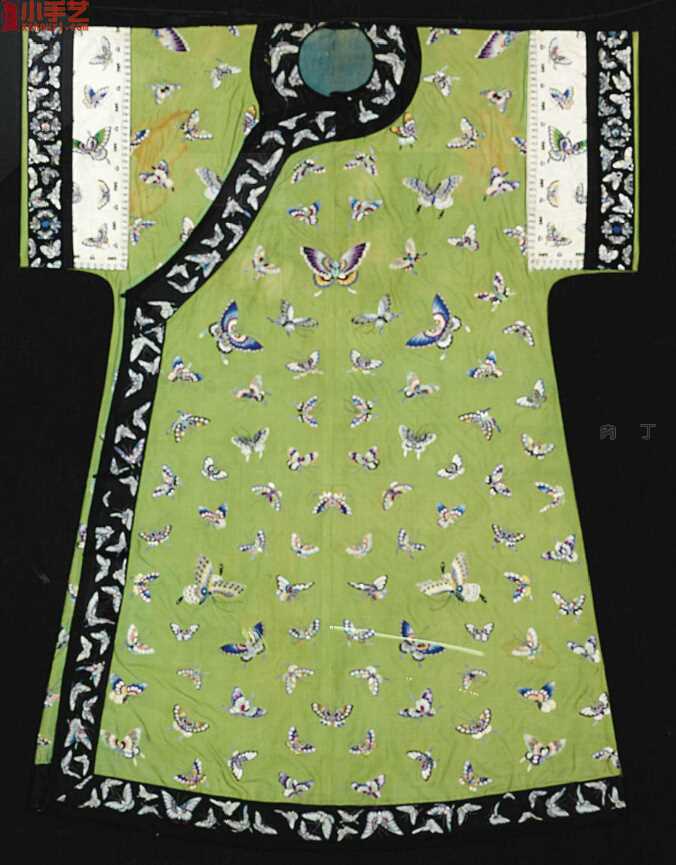
So yes, the piece that Mulan wore for matchmaking was what the art and fashion world would call a “fusion” piece (probably sells better than antique pieces). Blending the western invention of synthetic dyes in mid 1800s with the Eastern Han dynasty style robe of the 2nd century or so, peppered with some Qing oriental manchu butterfly motif for their dynamism.
5. Mulan’s mom is actually a time-travelling historical dress-up fan albeit a little noob
Besides the heirloom-time-travelling-fusion-matchmaking dress that Mulan’s mom owned, she also did Mulan’s make-up. That’s something I really would want to discuss cos it’s the funnest part! For this part, I especially consulted a researcher specialising in ancient Chinese make-up re-creation–Kasia Gromek so we could understand the raw material a bit better.

- BROWS
There were many different things that were used for brow powder and this greenish/blue pigment (Chinese didn’t really differentiate blue and green in writing in the past, as did Japanese, yes we’re all the same) would be sold as an exotic brow colouring make-up from “Persia”. As with today, “Made in Persia” definitely sounded better than “Made in China” to the Tang populace who were obsessed with the foreign imports and culture. Such an item would command a super huge premium. Although according to Kasia, the actual item is probably “Made in India” and from a mixture of indigo (blue pigment) and henna.
In another account I read (not sure of it’s authenticity), there was also a mention that it was a greenish/turquoise pigment from copper after it oxidises and produced something like verdigris which is toxic to the body, and the Chinese called it Copper brow pigment. But Kasia said such pigments were used for paintings or glazes, not for make-up. But yes, I would say good on Mulan’s mom for nailing this!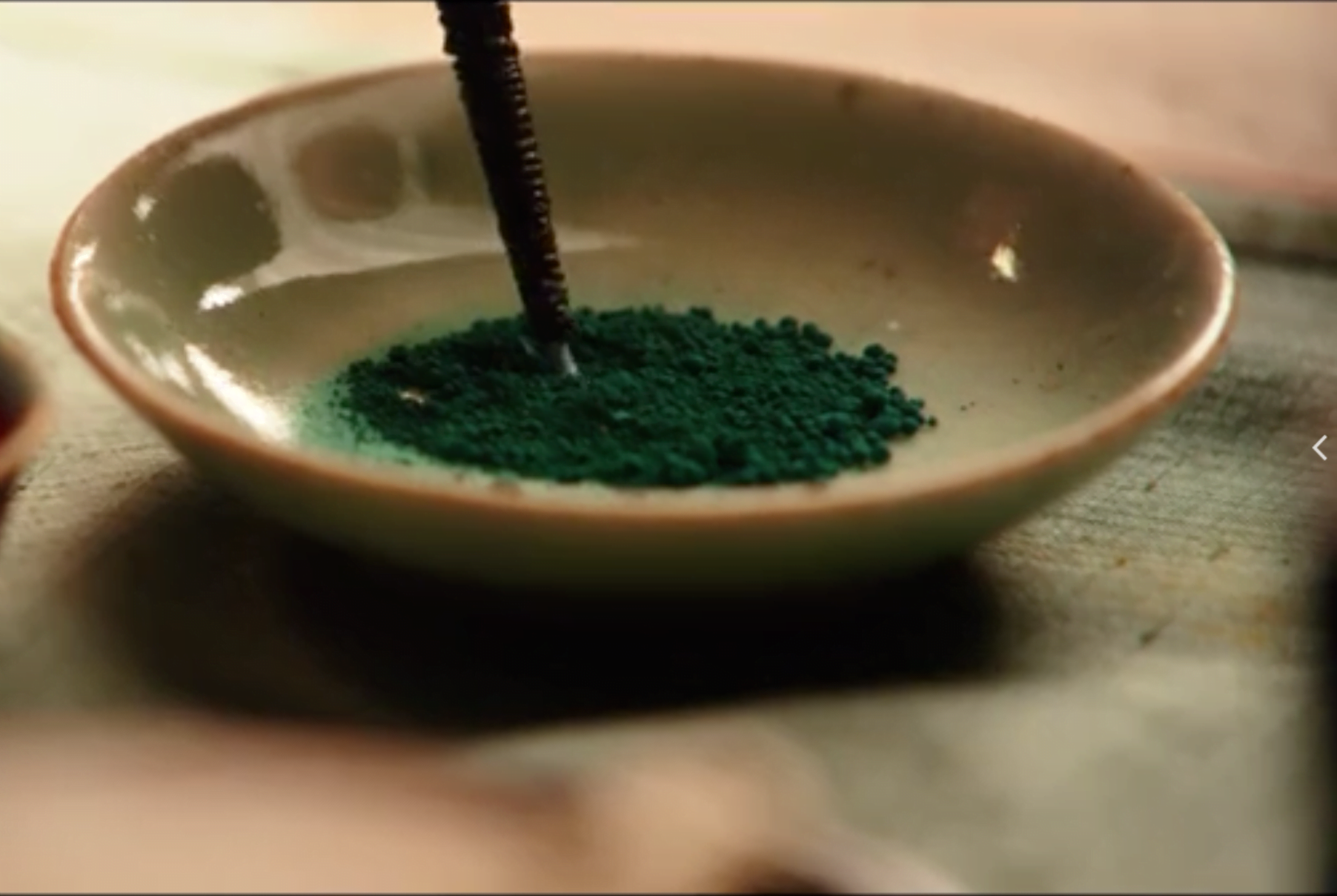
And her mom’s probably very rich… cos it’s not cheap at all. Usually it’s what the emperor would give to his concubines and apparently by Ming dynasty, a homegrown Chinese indigo would sometimes be sold as the original by some profiteering merchants (see that’s why the Chinese traditionally has always detested the merchant class). In the Ming dynasty, if you were caught doing it, the penalty is death. But it is a hugely profitable business so… there’ll always be takers.
There could also be mixtures made from lapis lazuli and malachite for the brows as re-created by Kasia below: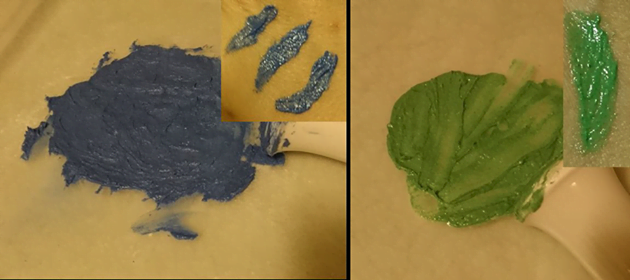
Fancy huh!
A pity Mulan’s mom didn’t follow @hanfugirl otherwise she could accomplish real authentic looking Tang dynasty make-up with all these resources she owns. - FOREHEAD
Forehead yellow powder is a make-up style that was more popular during the northern and southern dynasties, a hundred years or more before the Tang dynasty. It was said to be inspired by the Buddhist golden sculptures and their golden glow, and it is either the dried extract of yellow dye from safflower (super organic) which looks brownish actually, or a mineral like yellow-orange orpiment (the OG mineral make-up).
However, because Mulan’s mom probably didn’t practise doing make-up for a while, so she kind of overdid the yellow. I would imagine that it would look more like this image that I did based on the kinda look from a few centuries before the film’s time period, when the yellow forehead style was at its peak in terms of popularity :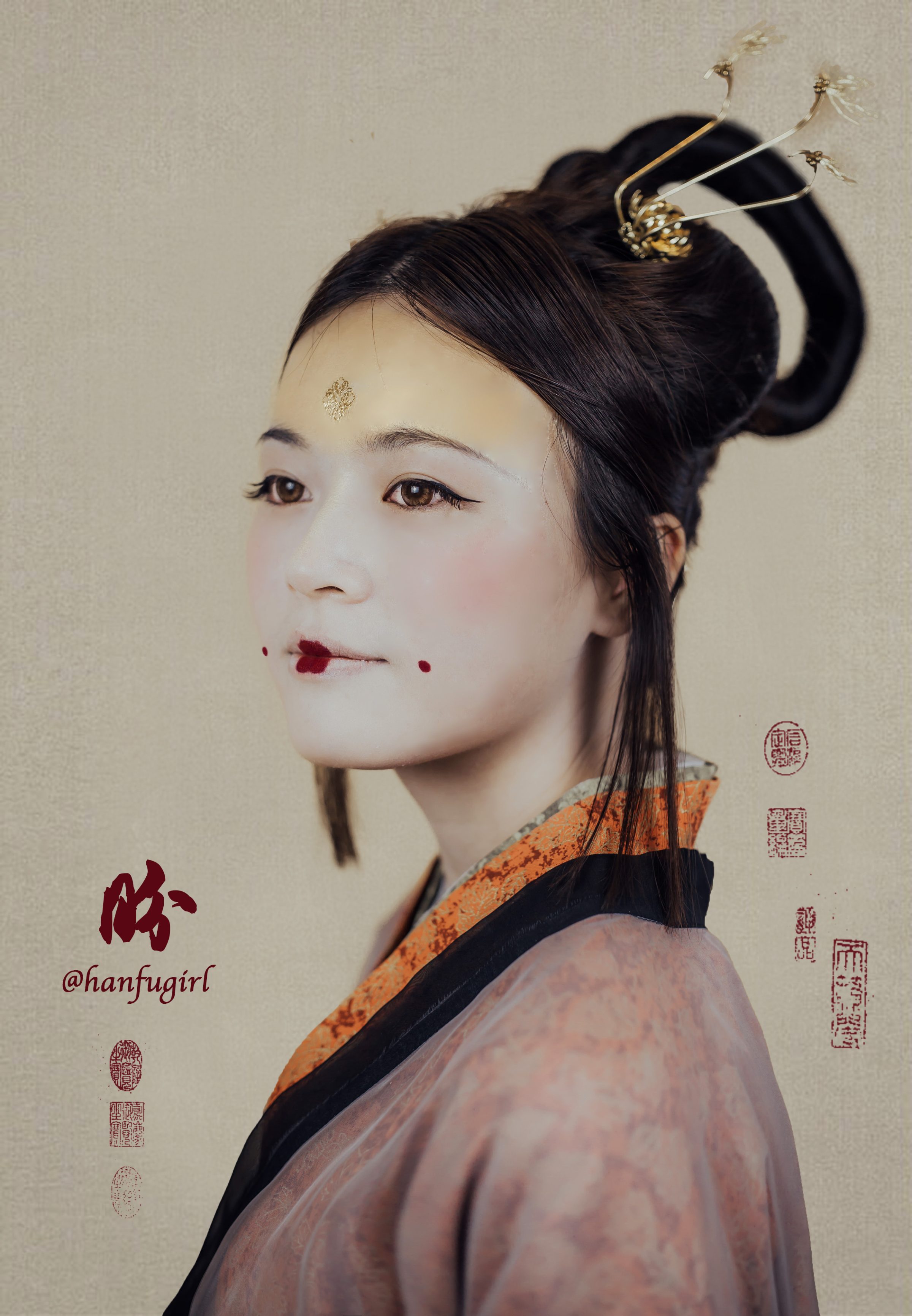
In the original Ballad of Mulan it was mentioned that she pasted a yellow decoration on her forehead, so it could also be that she used a yellow or golden looking insect wing/paper/decorative thing to paste onto her forehead. - FOUNDATION
Again, Mulan’s mom, like the emperor, is an anime and fan of Japan clearly. The base make-up in such thick white paste looks more like the type that Geishas use instead of how we think the ancient Chinese would. The ancient Chinese would use a mixture of lead white with starch which has a light shine to it, kinda like the look when you apply some shimmer base. So the look would probably be more like the image above than the geisha or mulan’s look in the film.
Kasia re-created the actual base (no. 1) in her spare time, with a few alternatives that’s safe for application in modern days cos no one wants to die or let their face rot from lead poisoning. Mulan’s face looks more like no. 4 (except even thicker) which is also made from a traditional recipe but much later in the 15th century. - LIPS & ROUGE
I think Mulan’s mom would do well to invest in a proper make-up class or even a painting class on blending. Perhaps she hasn’t left her village in a long tie, and lost touch with the latest trends and finesse of the Tang make-up in the capital city.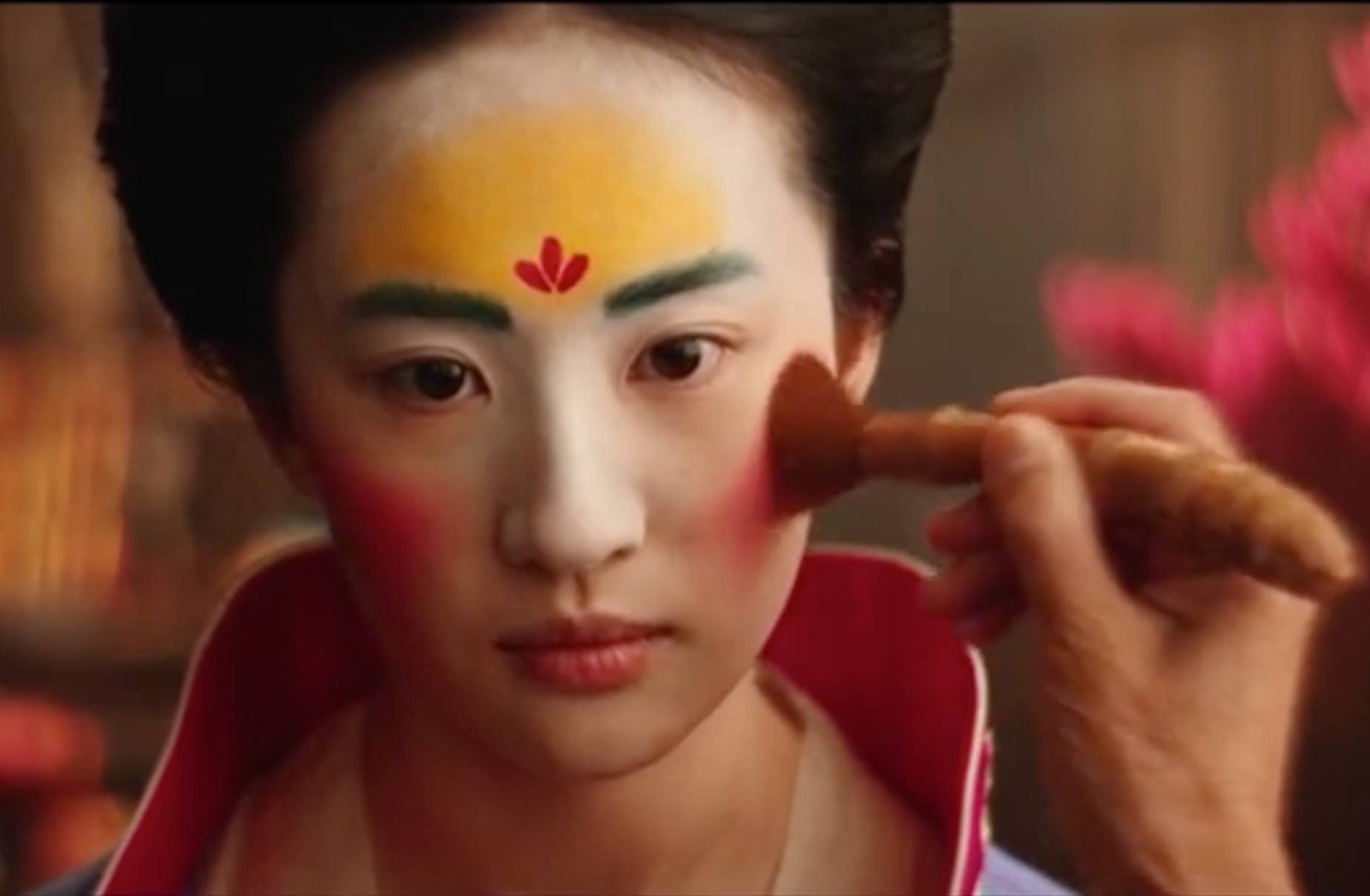
BLEND BLEND BLEND! Someone please send Mulan’s mom ANY youtube make-up tutorial!
The rouge powder would’ve been made from safflower, while the lipstick (yea, they actually have tube-like lipsticks like what we have today way back in the Tang dynasty!) would’ve been made from the toxic vermillion. It’s a pity that Mulan’s mom hadn’t left the village in a while, otherwise we would be able to catch a glimpse of the Tang lipstick and realise just how advanced and sophisticated they had been!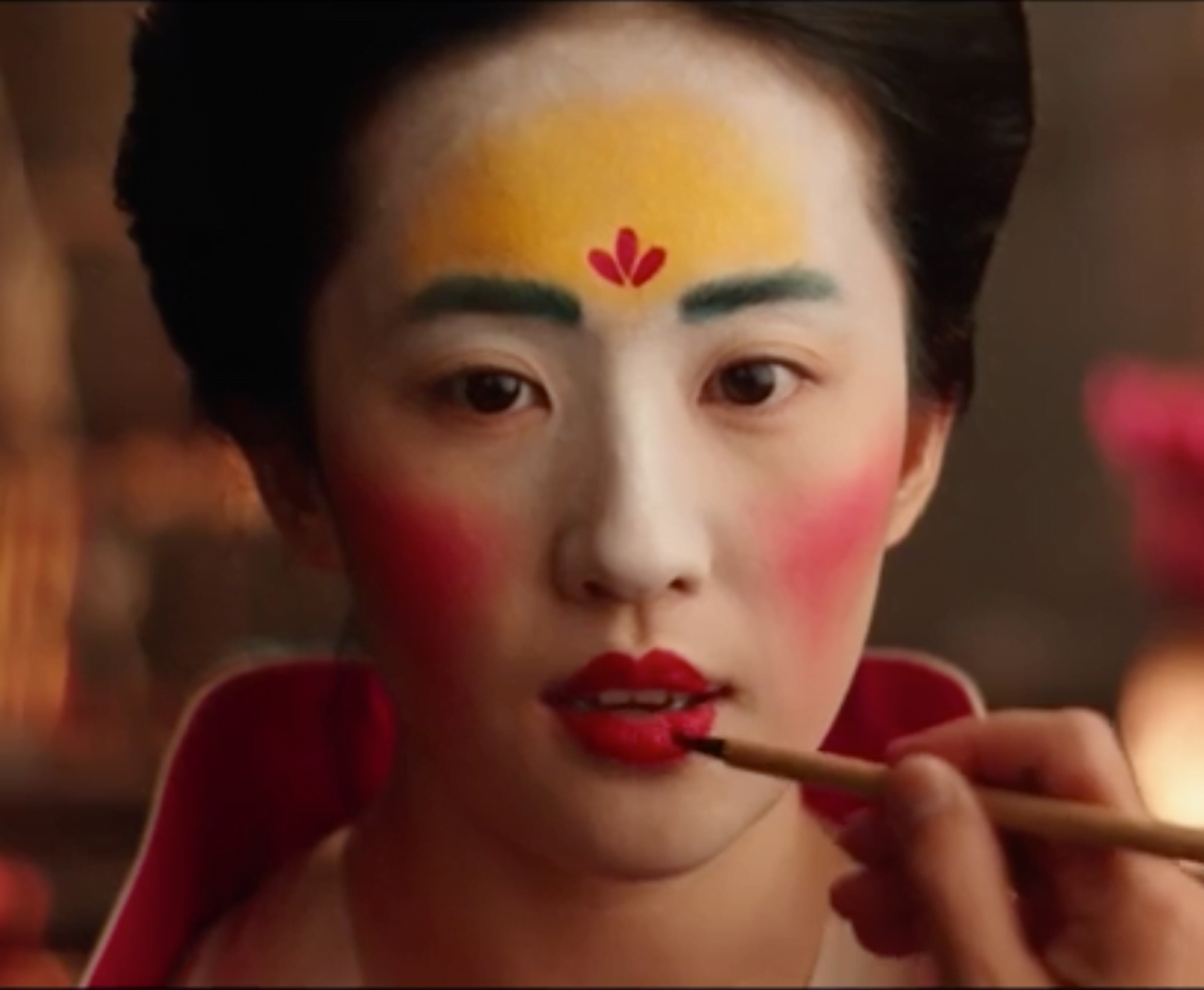
Nobody paints their lips this full in the past… Mulan’s mom was ahead of her time by 1,300 years.
I have taken the liberty to re-edit Mulan’s look to be more historically accurate. Trying hard to ignore the very out-of-place time-travelling china vases in the background and her dress.
Mulan’s mom really need to get out of her village more. She’s single handedly sabotaging Mulan’s chances at getting a match even if Mulan nailed it herself.
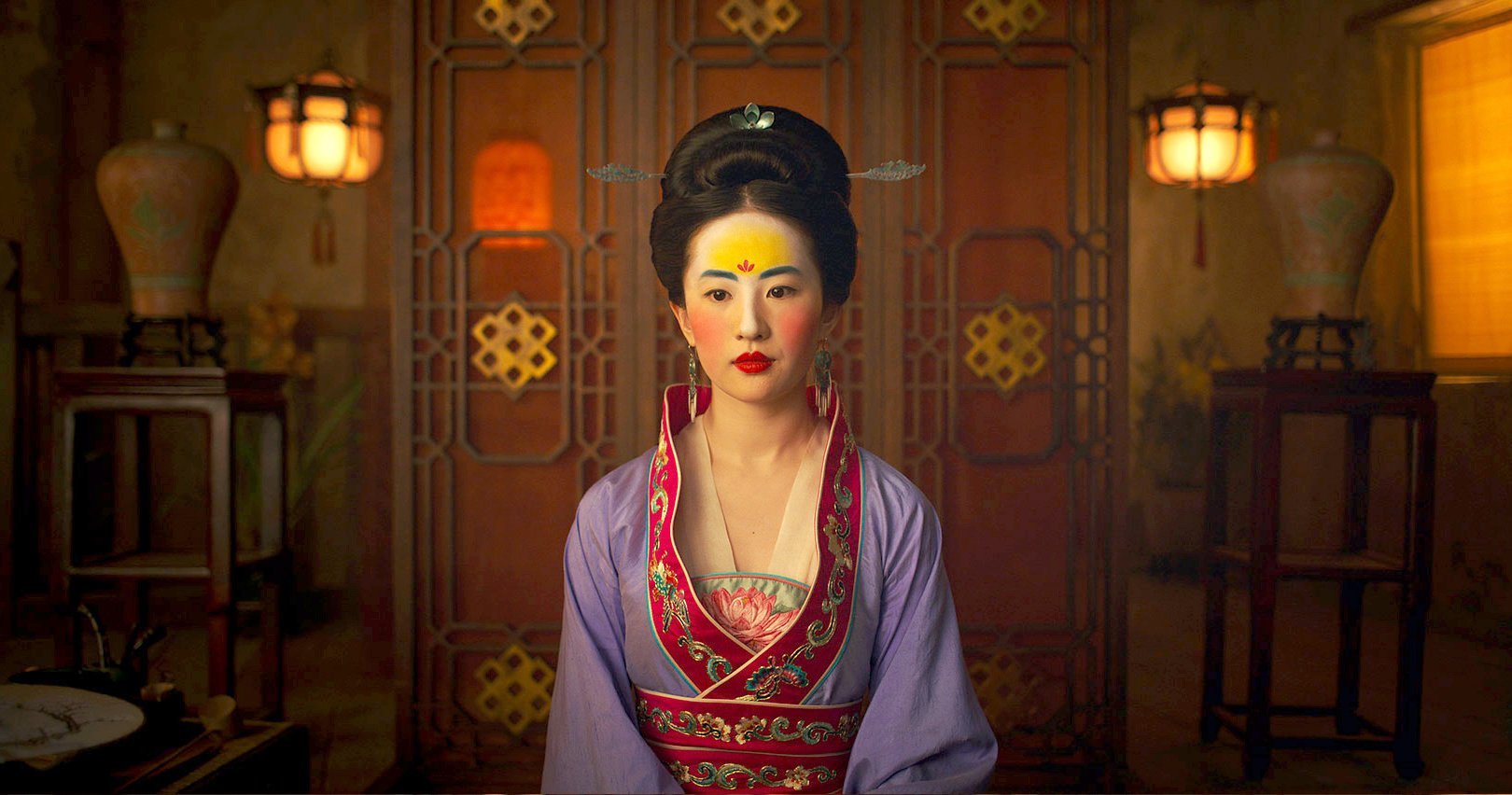
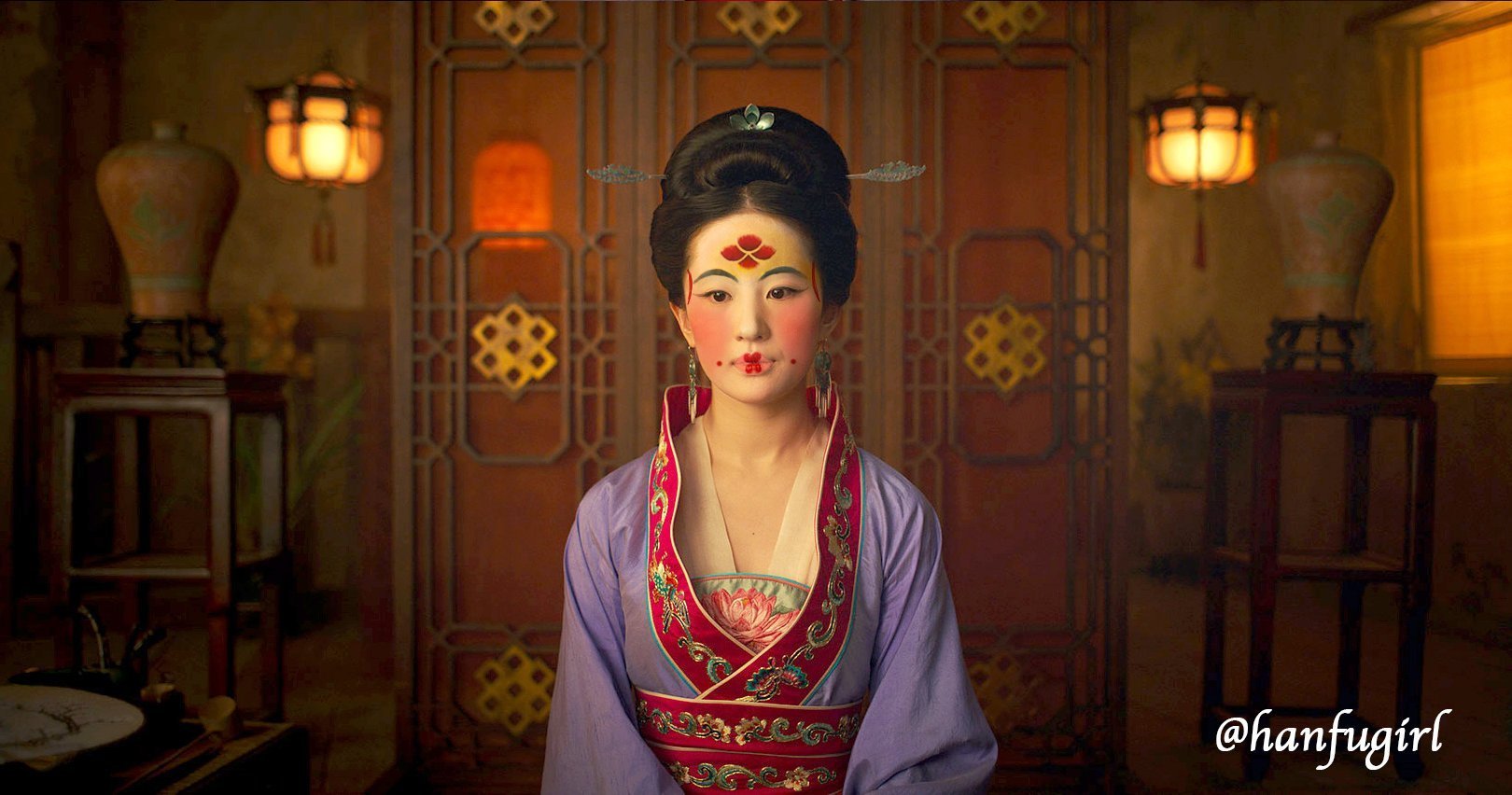
5. The Matchmaker is the Red Queen in disguise
Up to this point, I’m inclined to think that the Mulan Universe is full of mutants whose “qi” could help them travel across time and space. And the women in particular didn’t bother hiding them, in fact, they have been flaunting them IN YOUR FACE through fashion. Also, they have an obsession with the Qing dynasty and occasionally, the Japanese. Mulan really should’ve studied fashion history better so she could stop them and form some kind of girl power alliance.
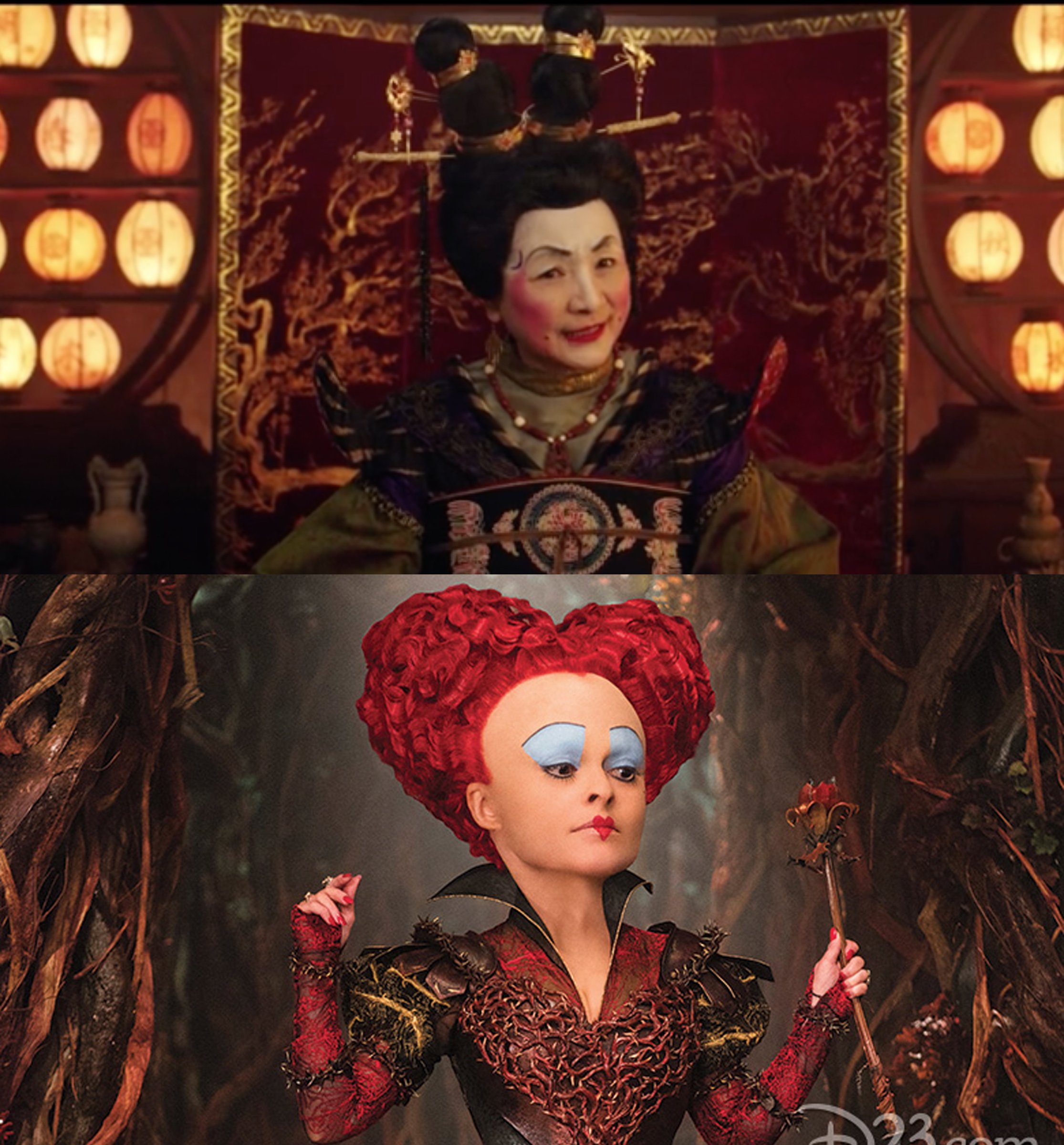
The Matchmaker is definitely the Red Queen in a Chinese woman’s skin. Her sartorial style betrays her real identity except for the fact that had she retained her tiny lips, she might look more convincing as a Tang woman.
The Red Queen definitely is a fan of the Qing dynasty, and takes an almost Japanese Oiran approach to the accessorising herself with Qing dynasty hairpins.
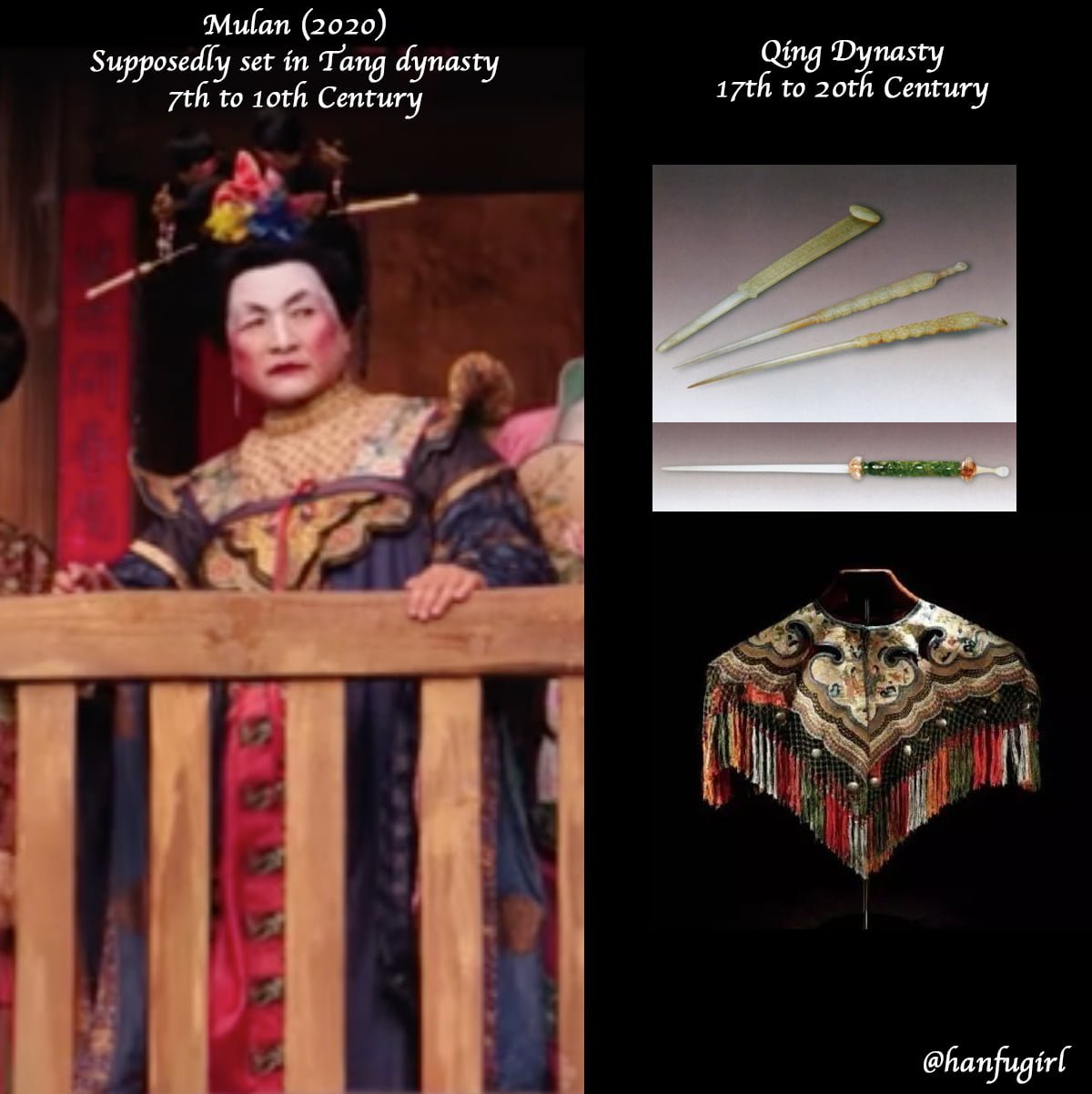
The concept of cloud shoulder has been around in Chinese fashion for thousands of years, before the Tang dynasty, but it was only worn by the Empress as her ceremonial dress. Thus further proving my hypothesis that the Matchmaker is the Red Queen in disguise, because otherwise, How Dare She?!?!
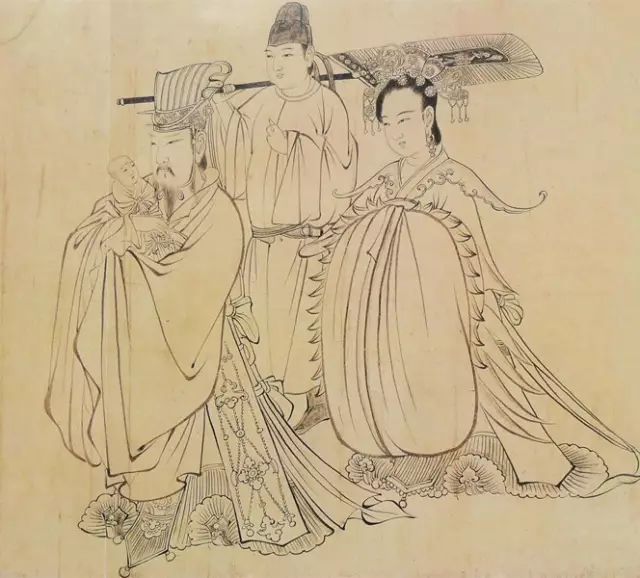
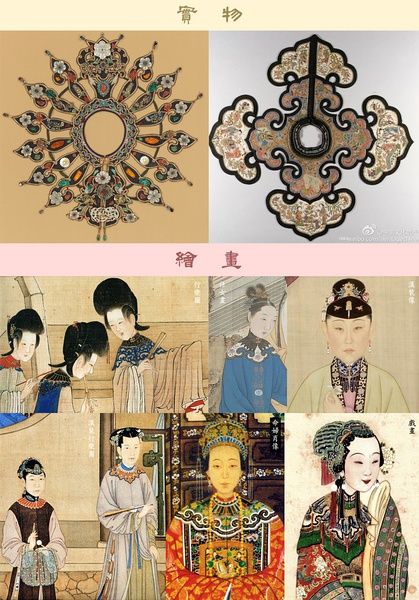
The cloud shoulder was more commonly used amongst civilians/plebeians in the Ming and Qing dynasty, unlike what the costume designer of Alice in Wonderland II claimed.
The sequel picks up when Alice has returned from a trip to Asia, and she wears a colorful look procured on her journey for most of the film. Atwood said it was “loosely based on the imperial costumes in China,” and it features a decorative purple tunic embroidered with little hats and rabbits, surrounded by a flower border based on traditional embroidery.
-Colleen Atwood
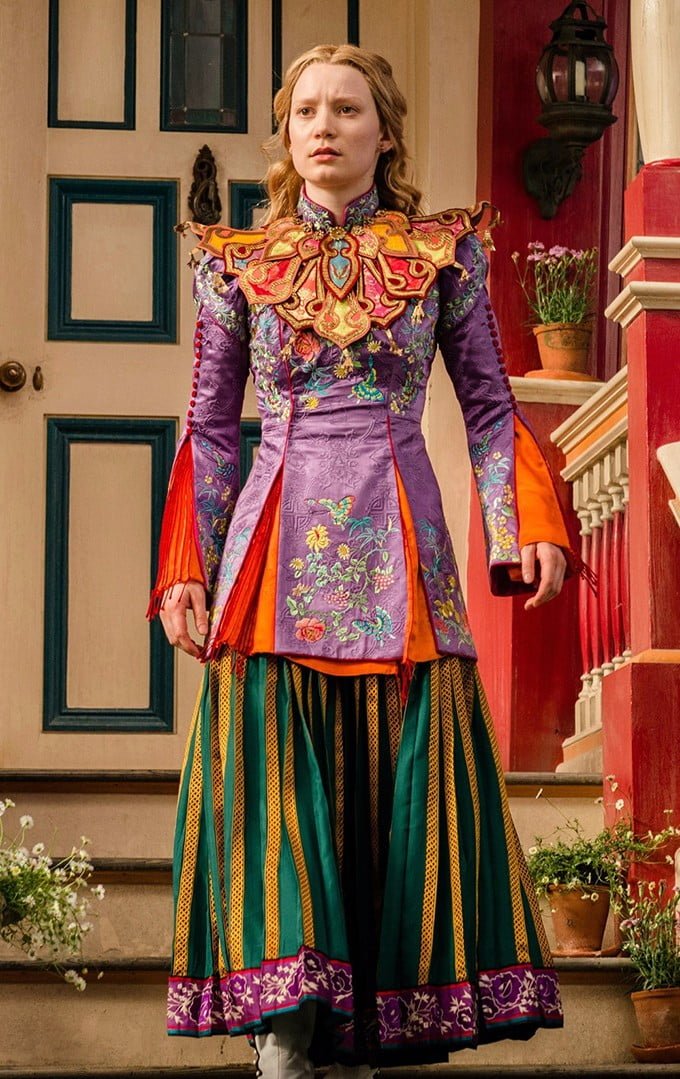
Note how similar the butterfly embroidery on Alice is to the one in Mulan.
I find it hilarious that designers (both Chinese *cough* Guopei *cough* and the West) love to refer to the Chinese ‘imperial’ family as their design inspiration while getting their inspirations mainly from the commoners actually. Yes, I get it, it’s marketing fluff talk. The Manchurian imperial family’s dresses are extremely boring actually because of all the rules they had to adhere to, better luck with the free-and-easy commoners!
The hairpins from Qing dynasty were also worn in a much more delicate and subtle manner by women of the past:
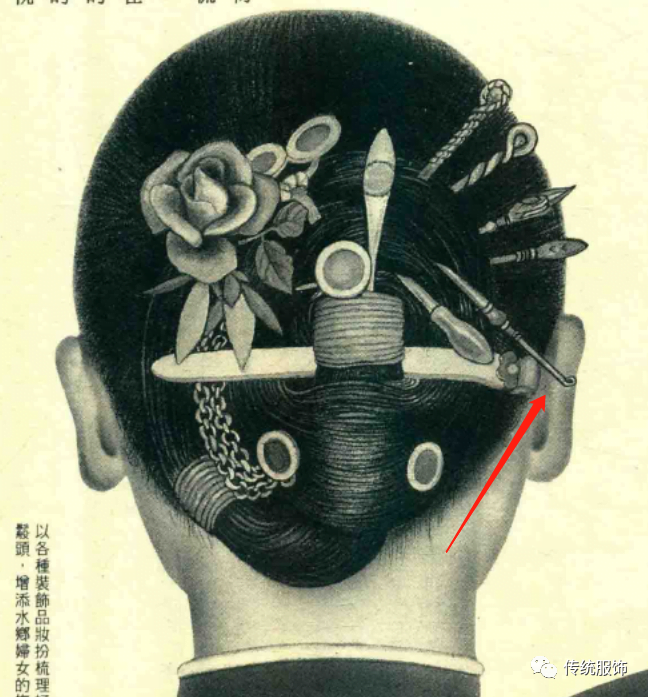
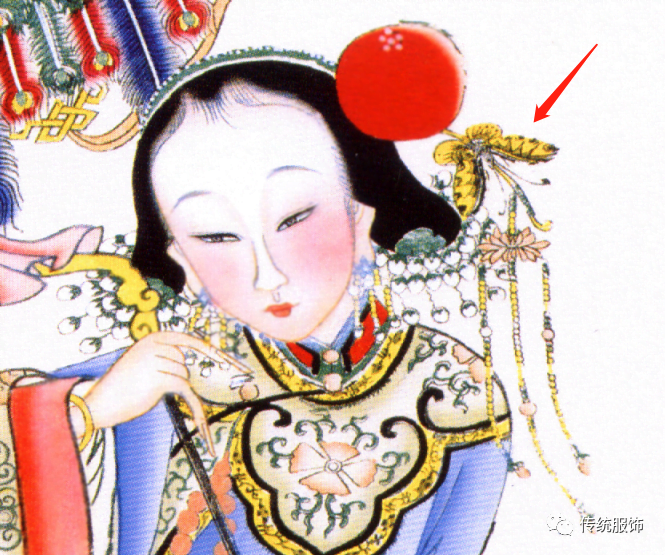

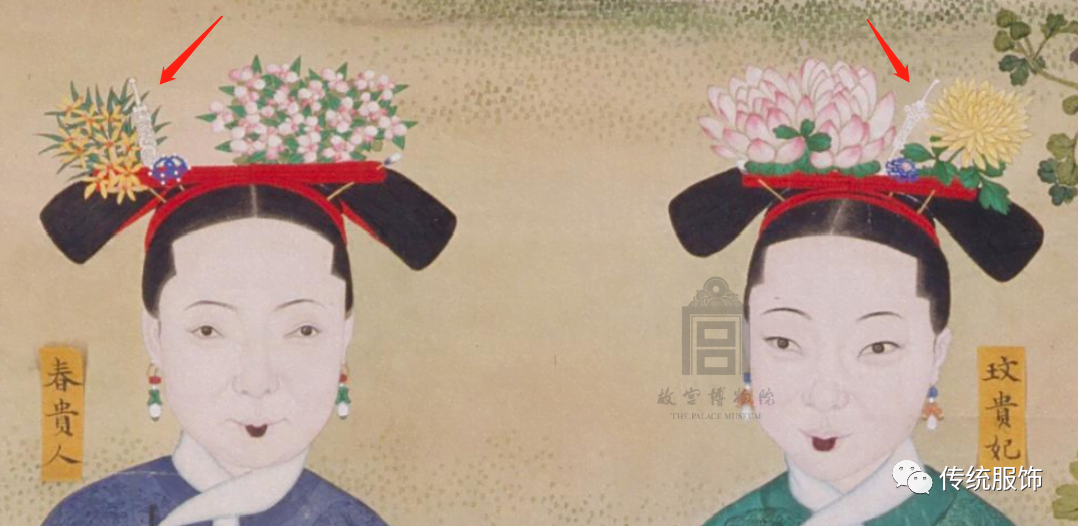
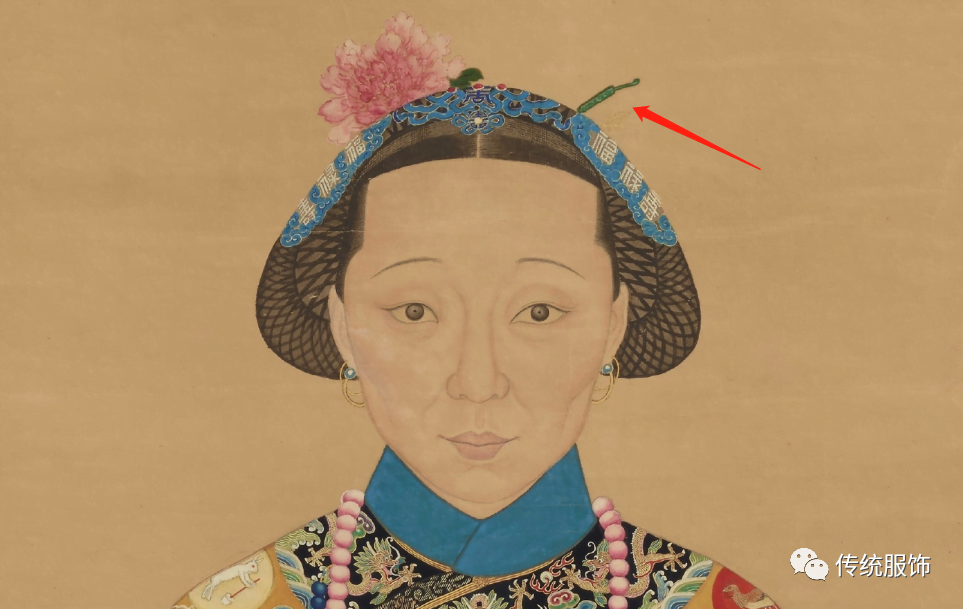

Compared to how the Japanese Oiran would wear theirs:
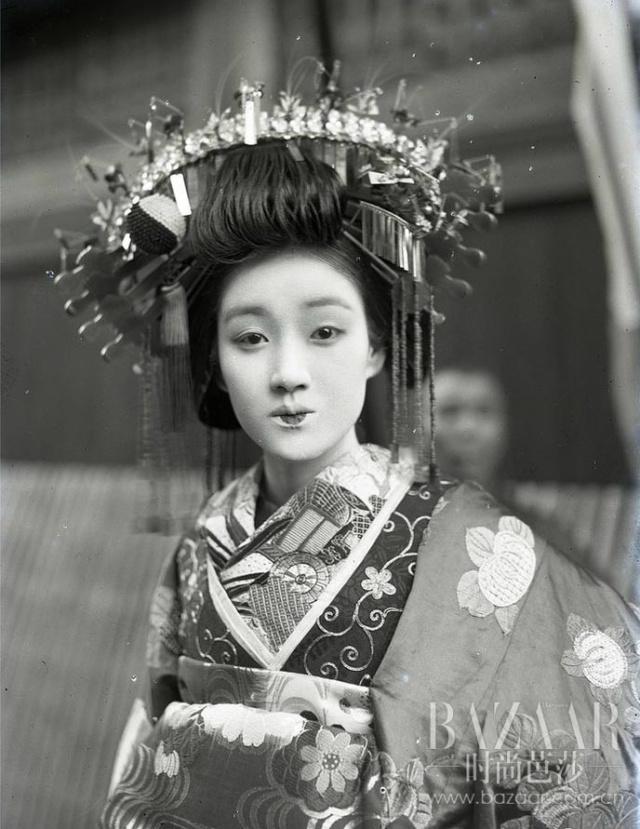
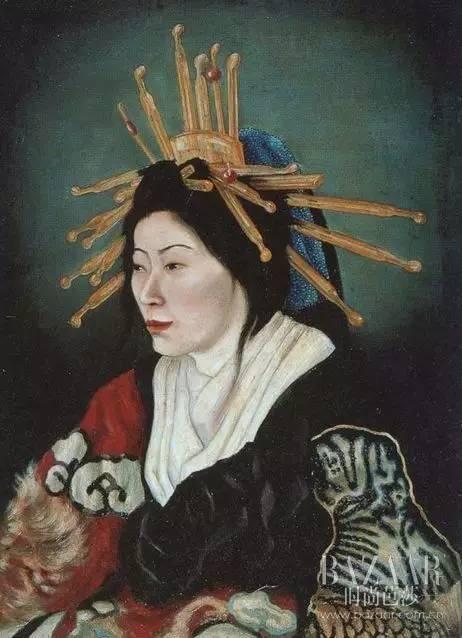
Since we’re on the topic of ear-digging hairpins, please indulge me in a quick perusal of the beautifully and intricately crafted pins (the show really don’t do them justice):


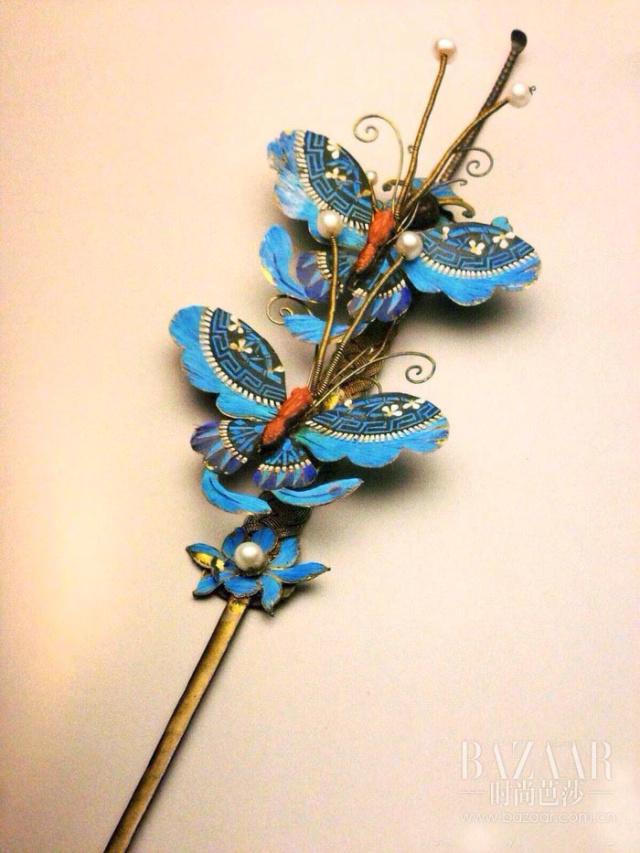
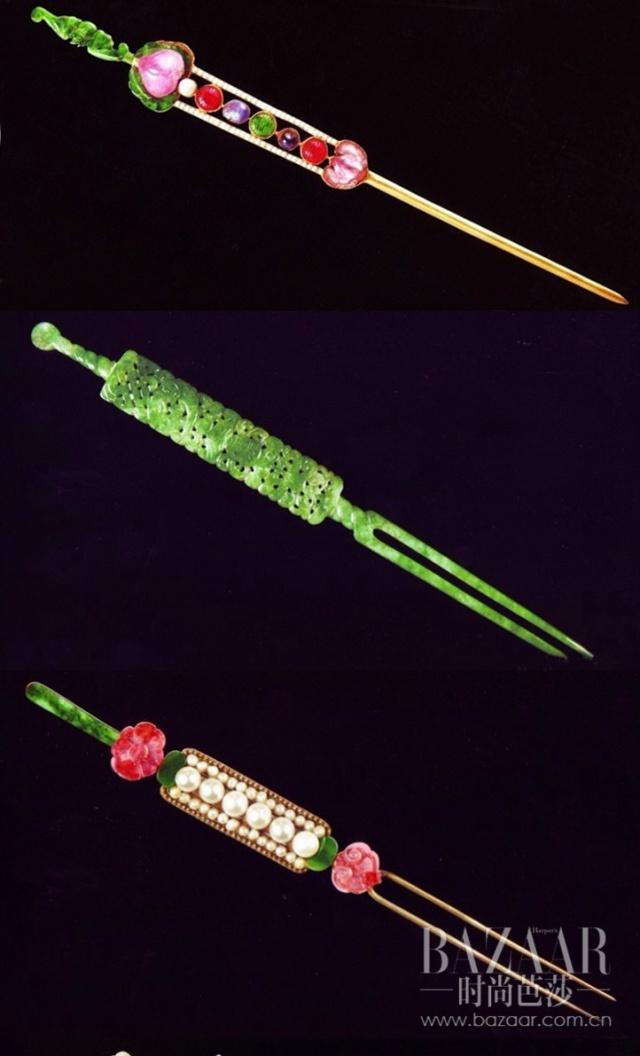

JUST IMAGINE…
Overall, I’m actually disappointed in the production value of the costumes and make-up in the show. There’re a lot of lost opportunities to showcase the Tang culture and fashion which featured really brightly coloured dresses (which the show has) that are tastefully matched and not kitschy (which they are in the film).
The Tang dynasty has so many dramatic make-up styles for the crew to choose from, such as eyebrows, forehead decoration and lips as these:
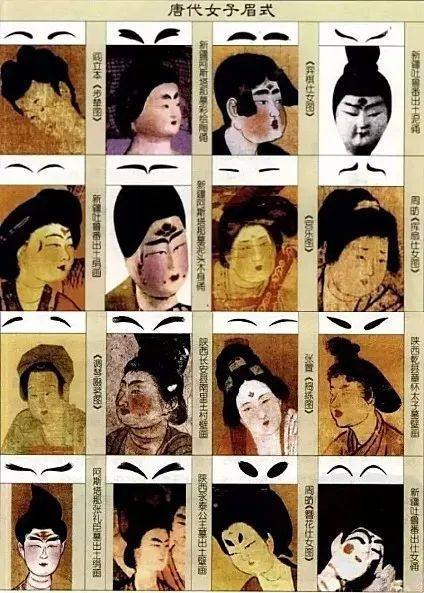
But no, instead, we get Paul Frank lookalikes.
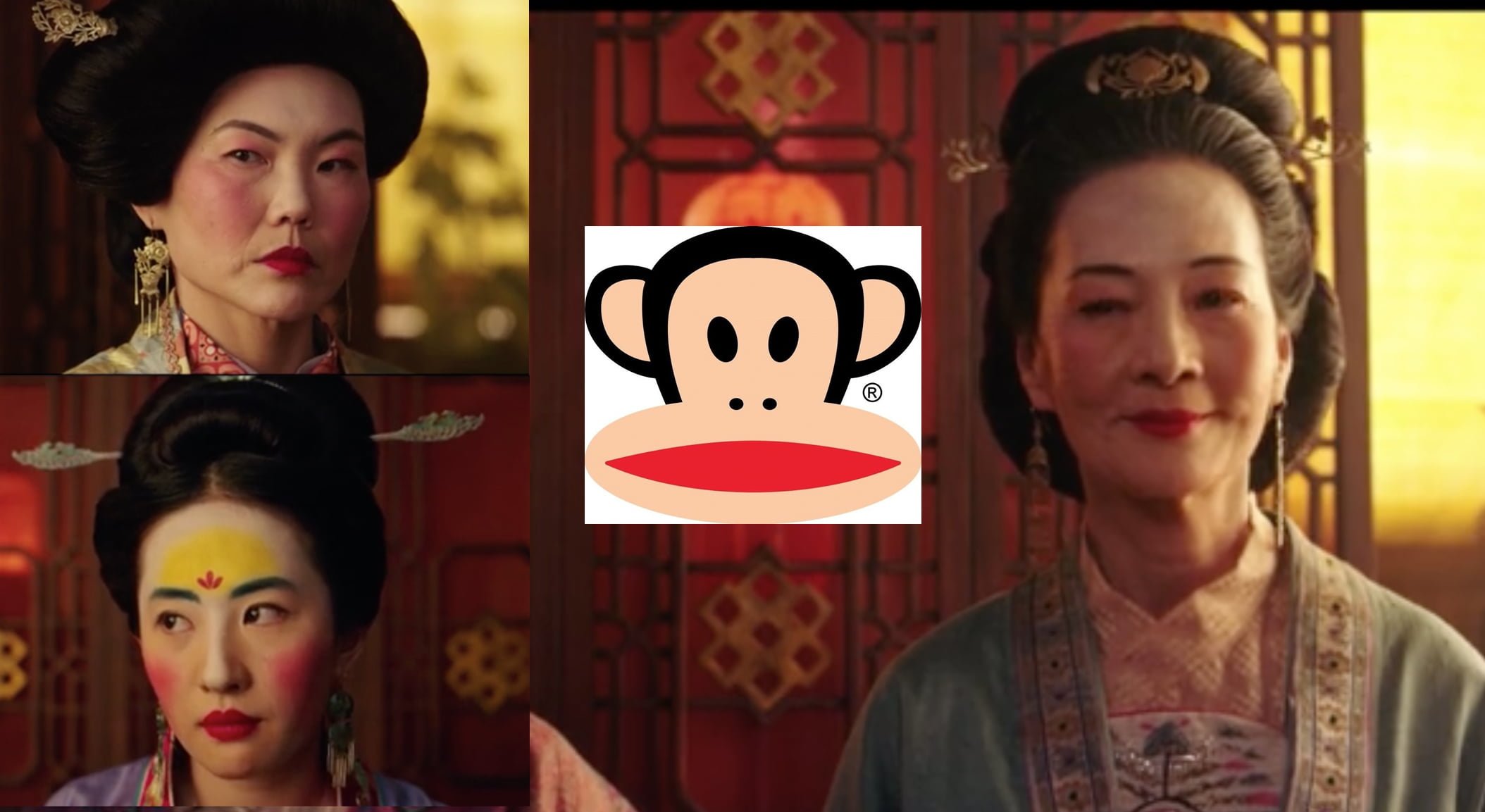
If I have it my way, the characters could look like these (based on my courtesan series):
MULAN AND SISTER IN NORMAL SETTING

MULAN DURING MATCHMAKING

THE CONNIVING WITCH
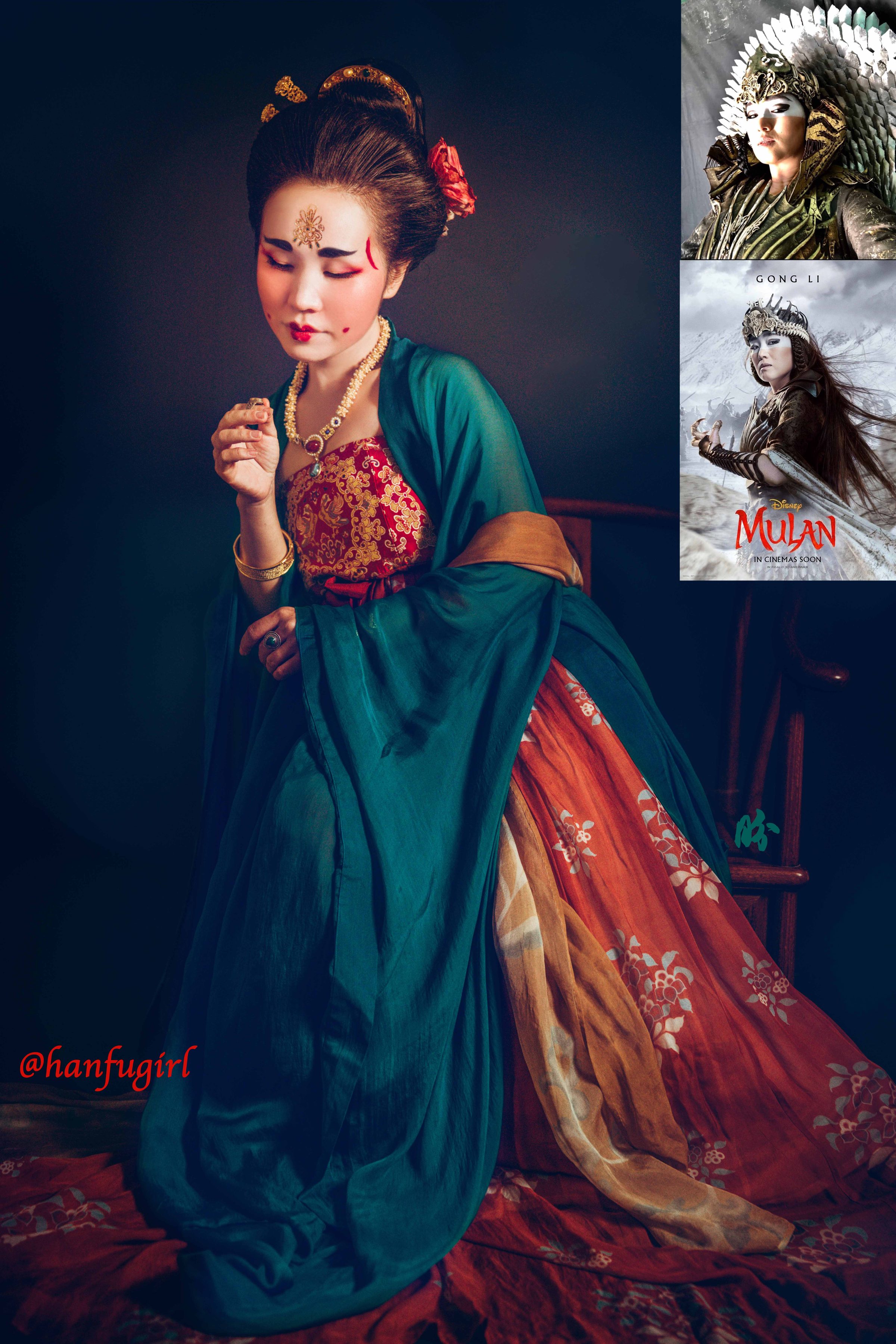
THE BADASS MATCHMAKER WITH SIDEKICK
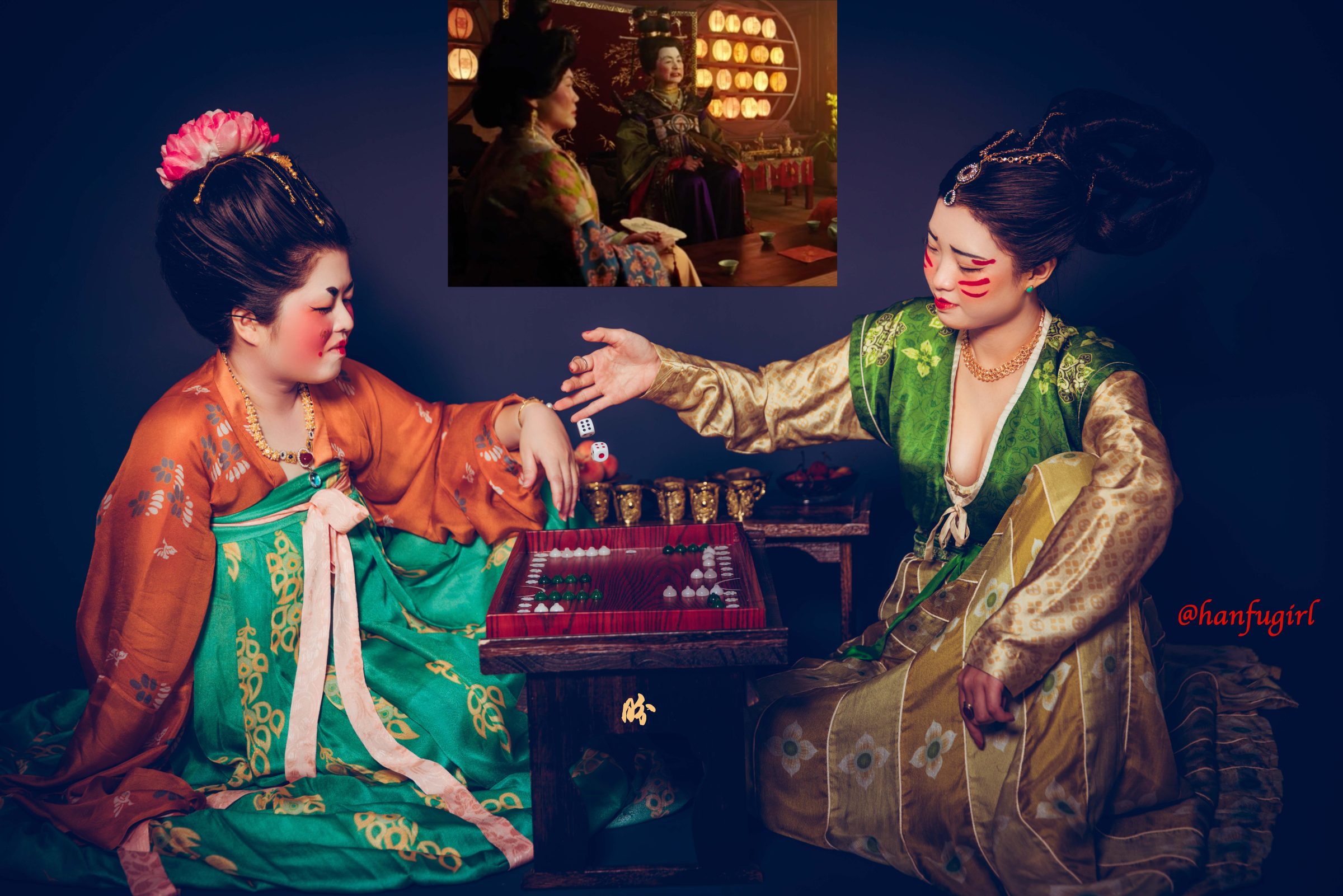
Taking a step back, if I’m someone completely ignorant of the Chinese culture, I’d love Mulan’s colourful stereotypes because they conform to my expectation of how Chinese should look. Cheap, kitschy, exotic.
Like these shoes which have been done in collaboration with Disney by a supposedly famous UK brand (supposedly because I didn’t know them before, so I guess not famous enough!), it shows that there is a real market out there who expects such visuals presented in Mulan:


Lots more to rant, but I decide to be positive and will get started on the parts where it showed attempts at being historically accurate in the next post.

Leave a Reply